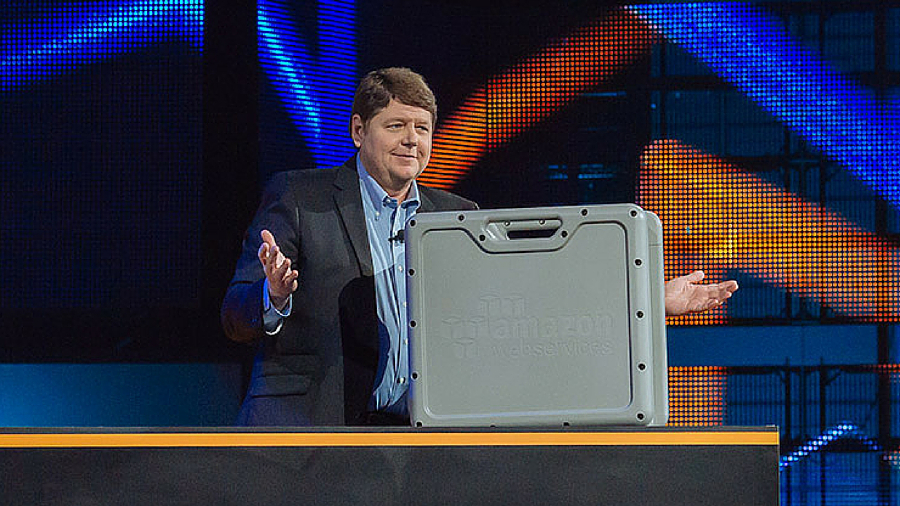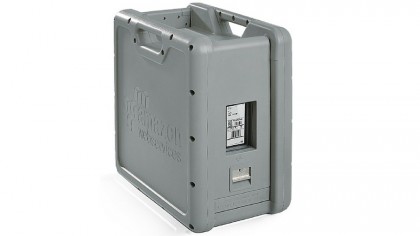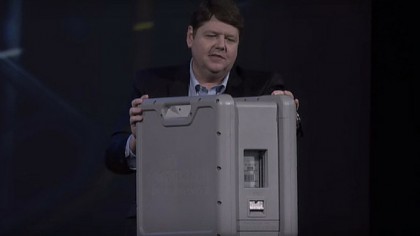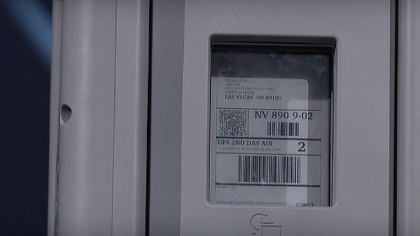Snowball: Why did Amazon just make a hard drive with a Kindle attached?
It's about moving big data, but is the 50TB Snowball retro thinking?

In the wireless world of cloud infrastructure and services, Amazon Web Services (AWS) just chucked a curve-ball. Or, rather, a Snowball. A 50TB hard drive weighing 20kg that can be quickly filled with data and posted to AWS for uploading to the cloud, Snowball is said to be a "novelty", but one that will spread the cloud concept to companies with petabytes of archived data which they perceive to be un-cloudable, as it were.
But can a $200 (around £130, or AU$280) – that's the rental price of course – slab of hardware like Snowball really be the future of the cloud?

Why does the cloud need Snowball?
The Snowball concept was launched at October's AWS Re:Invent 2015 event in Las Vegas in front of initially bemused developers, and it does at first seem at odds with the cloud data concept. Why is a cloud and IaaS (Infrastructure as a Service) company like AWS suddenly interested in producing bespoke hardware? Because it wants business data in its cloud as quickly as possible, that's why – and certainly quicker than the internet allows in most parts of the world.
"It's actually very difficult to get large amounts of data from point A to point B," said Andy Jassy, Senior Vice President at AWS, at Snowball's launch. "Even for companies with a gigabit-per-second connection, it's unlikely you want to saturate that connection to move data. If they use 10% of that, which is pretty generous, it would take 100 days to load 100TB into the cloud – that's a really long time."

How fast is Snowball?
Jassy reckons that instead of taking 100 days to move 100TB, with a couple of Snowballs you can do it inside a week. "That's a very different model for getting your data onto the cloud," he said.
AWS already has a physical Import/Export service that allows its customers to send it hard disks, but claims Snowball is cheaper than a company having to buy each disk separately – typically 1TB – load on encrypted data, and then sort out the logistics. "There's a lot of opportunity for human error," said Jassy.
What's in a Snowball?
As well as that 50TB hard disk, Snowball is designed to be ultra-durable because it's supposed to be posted.
Are you a pro? Subscribe to our newsletter
Sign up to the TechRadar Pro newsletter to get all the top news, opinion, features and guidance your business needs to succeed!
It may be totally in service of AWS' core offering of cloud storage, but Snowball isn't just one piece of hardware. It's two. On the side of every Snowball is a Kindle – an e-Ink version like the Paperwhite rather than a tablet like the Fire – which serves as both an address label and a tracking device. Snowballs can be daisy-chained, too, so together they can carry vast datasets.

How does Snowball work?
Snowball isn't just about storage. "Snowball is a highly secure, shippable storage appliance that's much simpler than a disk to load your data into – and it encrypts your data end-to-end," says Jassy. "It has a tamper-proof secure enclosure, the container is easy to close and ship, and attached to it is a Kindle that allows you to automatically have a return label that you can track the progress of – both of it being shipped, and then being downloaded to AWS."
Snowball is also dust-proof, drop-proof and can withstand up to 8.5 G-force. Although initial Snowballs will be 50TB, the size is expected to rise. However, although they cost $200 (around £130, or AU$280) per use, Snowballs remain the property of Amazon, and get sent back into the system after they've transferred a big dataset.
Jamie is a freelance tech, travel and space journalist based in the UK. He’s been writing regularly for Techradar since it was launched in 2008 and also writes regularly for Forbes, The Telegraph, the South China Morning Post, Sky & Telescope and the Sky At Night magazine as well as other Future titles T3, Digital Camera World, All About Space and Space.com. He also edits two of his own websites, TravGear.com and WhenIsTheNextEclipse.com that reflect his obsession with travel gear and solar eclipse travel. He is the author of A Stargazing Program For Beginners (Springer, 2015),
